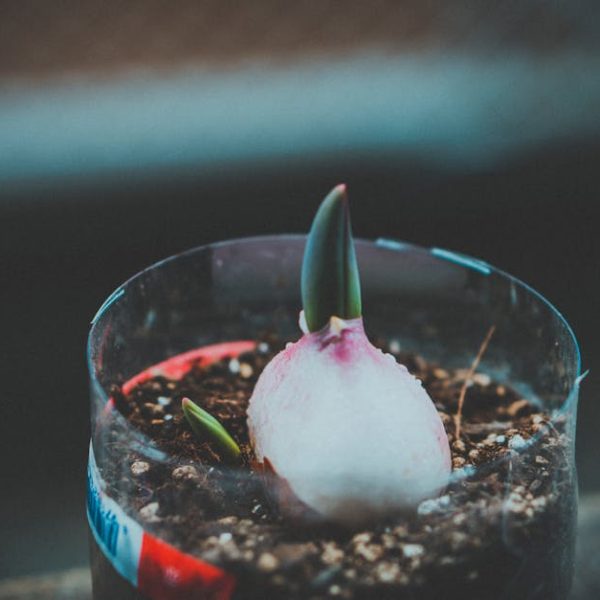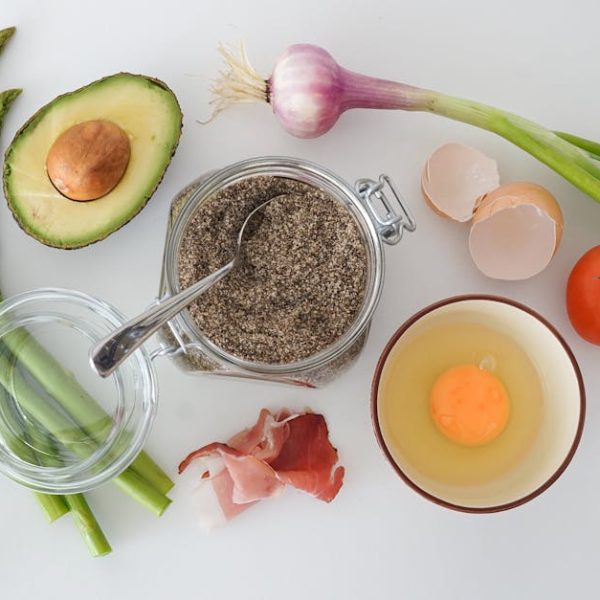Onions are a kitchen mainstay worldwide, providing our meals with that much-needed pungency and sweetness. Recognizing a bad onion, however, can save us from potential health risks or ruining a wonderful dish. Fresh onions usually possess a hard exterior, firm layers within, and emit a mildly sharp but pleasing aroma. Understanding these characteristics is crucial as they lay the groundwork for identifying when the onion has fallen off the freshness cliff.
Understanding The Usual State of Fresh Onions
A fresh onion’s beauty lies in its hard outer skin, color and turgidity. The outer skin will usually be a shiny husk whether white, yellow, or red, without any visible blemishes or molds. When you touch it, it should be firm and hard, not yielding to pressure much. Smell it and you’ll notice a distinctive yet pleasant odour that’s typical to onions.
To sum it up, a good onion should have:
- Bright and shiny skin
- Hard and turgid texture
- No visible molds or dark spots
- A pleasant and characteristic odour
Never undermine the importance of recognizing these traits. When you can differentiate a fresh onion from a non-fresh one, you’re one step closer to ensuring that your dishes retain their perfect taste and texture.
Recognizing Physical Changes in a Spoiled Onion
Physical transformation is the most telling factor of an onion going bad. When an onion spoils, you’ll discover visible molds, dark spots, and wet, slimy patches indicating decay. It may become much softer to the touch, sometimes even exuding juice when handled, which is an excellent indicator of the onion’s spoiled state.
Although observing physical change is usually a clear sign of rot, in some cases, the onion might be decaying inwardly without obvious outer signs. Thus, while it may aid when your onion is visibly rotten, it may not be the most infallible method.
Detecting Foul Smell as a Sign of a Bad Onion
The nose knows, so they say. In the case of onions, this saying holds a good deal of substance. A spoiled onion often puts off a sour, nasty odour. This repugnant smell is a result of bacteria and molds breaking down the onion, signifying that it’s no longer proper for consumption.
Pro Tip: Trust your sense of smell. It’s one of the most reliable tests when it comes to detecting spoiled foods.
Spotting the Presence of Mold as a Spoilage Indicator
If physical changes and foul odour fail to make it clear, another telltale sign of a bad onion is the presence of mold. Molds generally appear as abnormal dark spots or a grey/black substance on the onion skin or flesh. Apart from discoloration, mold is often accompanied by a softening of the onion and, yes, that odd stench again!
Here’s what you should look out for:
- Black or grey substance on the onion
- Softened skin or flesh
- Unusual mouldy smell
Observing an Altered Texture in a Bad Onion
A fresh onion is firm; a bad onion isn’t. As the onion decays, it loses its firmness, ultimately becoming soft and squishy. It might even get so mushy that the layers start to disintegrate and turn slimy, which is a significant indicator of a bad onion.
Stay safe with these best practices:
- Check the outer skin by rubbing it with your fingers to detect any dampness or softening.
- Cut the onion open and see the texture of the inner layers. If it’s mushy, slimy or has a funky smell, it’s time to let it go.
Final Reminders for Onion Storage and Consumption
The fight against onion spoilage starts with proper storage. Onions are best kept in a cool, dry place away from direct sunlight. This helps maintain their freshness and useful lifespan. Also, be mindful of the potential health hazards of consuming spoiled onions, as it can lead to symptoms akin to food poisoning.
Pro Tip: The best defense against a bad onion is not second-guessing your senses. If in any doubt whether the onion is still good or not, the safest course is to discard it.
Understanding The Usual State of Fresh Onions
Knowing how a fresh onion should look, feel, and smell will save you from a culinary disaster. Always keep in mind that a fresh onion should have a hard and shiny outer skin. This skin can be white, yellow, or red, depending on the variety, and it should not show any visible blemishes or molds.
A fresh onion also has a distinctive texture. When you pick it up, you should feel its firmness. It should not yield much to pressure, and certainly should never feel squishy or slimy. This turgidity is one of the main hallmarks of freshness in an onion. Equally important is the aroma. A fresh onion has a characteristic odour, which is usually slightly pungent yet pleasant.
Let’s turn these points into a handy checklist that you can use every time you’re inspecting an onion:
- Bright and shiny skin
- Hard and firm to the touch
- No visible molds or dark spots
- No unpleasant odour
Knowing what a fresh onion should be like is half the battle. Once you master this, you’ll be one step closer to selecting the best onions for your dish every single time.
Recognizing Physical Changes in a Spoiled Onion
If an onion has started to spoil, its physical appearance will start showing signs. These signs often include visible molds, dark spots, and wet, slimy patches – clear indicators of decay. As the breakdown process continues, the once firm onion may soften and even begin to leak fluids.
However, we should not rely purely on visual signs:
- Sometimes an onion might be decaying from the inside and might not show noticeable external signs.
- The onion could also have lost its freshness without displaying any visible molds or dark spots.
To summarise, inspecting an onion visually is a helpful practice, but it isn’t infallible. Always consider other factors such as smell, feel, and even taste.
Detecting Foul Smell as a Sign of a Bad Onion
Our sense of smell is incredibly accurate when it comes to detecting spoiled food. The characteristic fresh onion smell turns sour and unpleasant once it starts to spoil. This alteration in aroma is caused by bacteria and mold breaking down the onion over time.
Pro Tip: Always trust your nose when it comes to identifying spoiled food. It’s one of our most important sensory tools, and it rarely misleads when it comes to food freshness.
Spotting the Presence of Mold as a Spoilage Indicator
The presence of mold is the most evident sign that an onion has gone bad. Usually, mold appears as a black or gray substance on the onion. It could be on the skin or even growing within its layers. Molds are known to soften the onion, turning its robust layers into a mushy mess, and are often accompanied by a foul smell.
Here’s a checklist of signs that your onion might be moldy:
- Appearance of black or grey substance on the onion
- Softening or mushiness of the onion’s skin or flesh
- A strong, unpleasant, and moldy smell
Observing an Altered Texture in a Bad Onion
The firm and crispy texture of a fresh onion transforms into a soft, mushy feel once it decays. This alteration in texture can provide a clear hint that the onion has gone bad.
Make these texture-checking practices a habit:
- Rub the outer skin lightly with your fingers to check for softening or dampness, which are red flags.
- Cut the onion open to inspect the texture of the inner layers. Mushy inner layers are unmistakable signs of a bad onion.
Final Reminders for Onion Storage and Consumption
The ideal storage for onions is in a cool, dry place, and away from direct sunlight. Proper storage not only extends the freshness of onions but also maximizes their lifespan. Remember, consuming spoiled onions can lead to health problems like food poisoning, causing symptoms like nausea, vomiting, and diarrhea.
Pro Tip: When it comes to determining the freshness of an onion, make when in doubt, throw it out your mantra. It’s always better to lose an onion than risk your health.
Key Takeaway:
- Learning to identify fresh onions is a vital part of recognising when they have gone bad. Fresh onions have a hard outer peel, are firm, and carry a slightly pungent but pleasant smell.
- Physical transformations such as visible molds, dark spots, and wet and slimy patches are clear signs of spoilage. However, some onions may decay internally without visible external signs.
- A bad onion will likely have a sour, unpleasant smell, markedly different from a fresh one. This foul smell is usually caused by bacteria and mold breaking down the onion.
- The presence of mold is an undeniable sign that the onion is spoiled. Mold often appears as a black or grey substance on the onion, causing it to soften and produce an unusual smell.
- A fresh onion is firm, but a bad one will turn soft and mushy. This change in texture is a key indicator that the onion has spoiled.
Let’s not forget the key role our senses play in ensuring we consume healthy, fresh food. Recognizing the signs of spoiled onions helps in maintaining our health while enjoying delicious meals. Don’t be shy when in doubt, discard any questionable onion and invest in a fresh one!
FAQs
Q: What can cause onions to spoil faster?
A: Onions can spoil faster when exposed to high temperatures, humid conditions, direct sunlight, or if they’re kept in plastic bags which prevent proper air circulation. Ensuring proper storage in cool, dry places can keep your onions fresh longer.
Q: Can a partially bad onion be saved by removing the spoiled parts?
A: It depends on the extent of the spoilage. If there’s a small rotten spot, you might be able to cut it off and use the rest. However, if the rot has spread, it’s safest to discard the whole onion.
Q: How long does a fresh onion usually last?
A: Unpeeled whole onions can last up to two months when properly stored in a cool, dry place. However, once it’s cut, it should be used within a few days to a week.
Q: Can cooking kill bacteria or molds present in a spoiled onion?
A: Although cooking at high temperatures can kill some bacteria, it won’t get rid of the toxins produced by molds. Therefore, it’s unsafe to cook and consume a spoiled onion.
Q: Can refrigeration extend the life of an onion?
A: Yes, but only after it’s been cut. Whole onions should be kept in a cool, dry place. However, once an onion is cut, the remaining part should be wrapped tightly in plastic wrap or stored in an airtight container, and kept in the fridge.
Remember to share this article with friends and family who could benefit from it. Explore more such informative blogs at our website.






